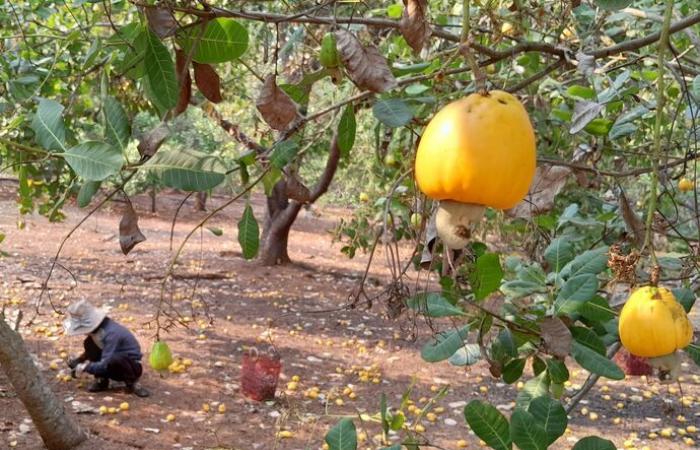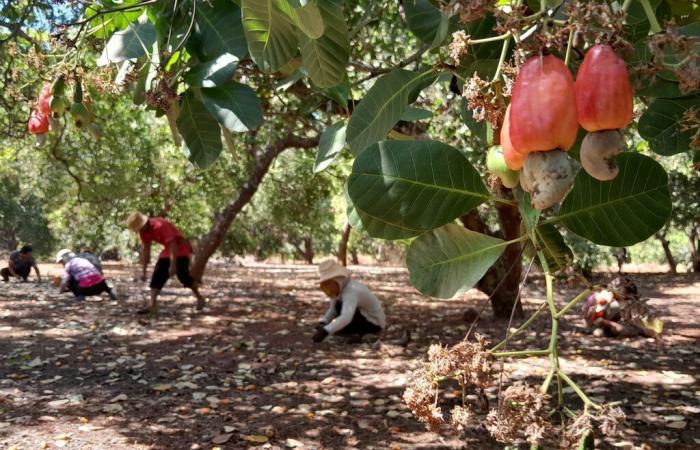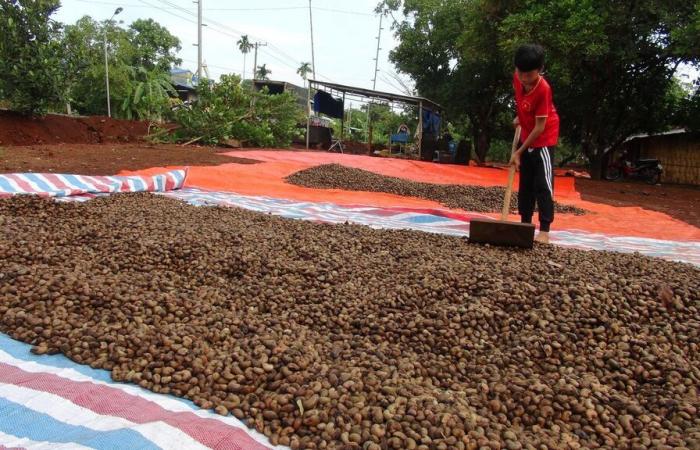>> Challenges of exporting products from industrial plants
>> Vietnam’s cashew exports target USD 4 billion in 2024
>> Opening of the 13e Vietnam International Cashew Conference
| Selection of cashew nuts for export. |
| Photo : VNA/CVN |
Cashew exports increased by 22.9% in volume and 21.8% in turnover year-on-year, according to the General Department of Customs, with an average price of USD 5,706 per year. tonne.
It is noteworthy that the export turnover of cashew nuts continued to grow, but the gap between the value of exports and the import turnover of raw materials gradually narrowed. .
In 2023, the export turnover of cashew nuts reached 3.64 billion USD, while the import of raw materials amounted to 3.1 billion USD. The industry achieved a trade surplus of USD 500 million.
In the first eight months of this year, the cashew industry spent around USD 2.7 billion to import raw materials for processing, close to the value of last year’s imports .
“This figure accurately reflects the current situation of the cashew industry,” said Vu Thai Son, president of Binh Phuoc Cashew Association and general manager of Long Son Company.
Vietnam is the leading country in the world in cashew processing. It has a large number of factories, but the domestic raw material area is declining, meeting only about 10-12% of the demand for raw cashew nuts from these factories. Most raw materials must be imported from Africa and Cambodia, according to Son.
A few years ago, the supply of raw cashew nuts was quite large, but this year supplies have fallen sharply due to drought.
In addition, exports of raw cashew nuts from African countries have also reduced, so the selling price of raw cashew nuts has increased by 40-50%.
The growth rate of cashew export price is not significant, so many companies have suffered heavy losses.
| The area of cashew cultivation in Vietnam is gradually decreasing from year to year. |
| Photo : VNA/CVN |
According to the Vietnamese Cashew Nut Association (VINACAS), the cashew cultivation area in Vietnam is gradually decreasing year by year, from 440,000 ha in 2007 to 302,500 ha during the 2019-2020 campaign, with a production of approximately 339,800 tonnes.
In 2024, the total cashew cultivation area nationally will remain at 305,000 ha, with an estimated production of raw cashew nuts at 370,000 tonnes. Due to low incomes and increased competition from imported raw cashew nuts, domestic producers in some regions have shifted to other, higher value-added crops.
Earlier this year, the price of cashews skyrocketed – suppliers demanded price increases or canceled contracts, causing a shortage of raw material for domestic cashew factories.
Bach Khanh Nhut, permanent vice president of VINACAS, said that Vietnam imports more than 2.5 million tons of raw cashew nuts every year, of which about 1.7 million tons come from Africa, mainly from Africa. from the West.
This year, The Child has impacted cashew production across Africa, including Ivory Coast, leading to low production and high prices.
Africa’s raw material exporters have increased the price of contracts that had previously been signed with Vietnamese companies, by 40 to 50 percent, to 1,500 to 1,700 USD per ton.
 |
| Vietnam is the leading country in the world in cashew processing. |
| Photo : VNA/CVN |
For many years, Vietnam was the leader in the global cashew supply chain, but this position was fragile and would certainly be lost if it did not change in time.
Small and medium-sized factories must compete with large export processing companies, mainly foreign direct investment (FDI) factories, for the purchase of raw cashew nuts. SMEs could go bankrupt if things don’t change, leading to large companies eventually dominating the global cashew market, he warned.
“The profits of the cashew industry have always been very low and now there are no more profits, some are even making losses”Vu Thai Son told the newspaper Adolescent.
Small businesses that sell cashews domestically or export to China without first signing a contract are the only ones who can make money.
VNA/CVN








